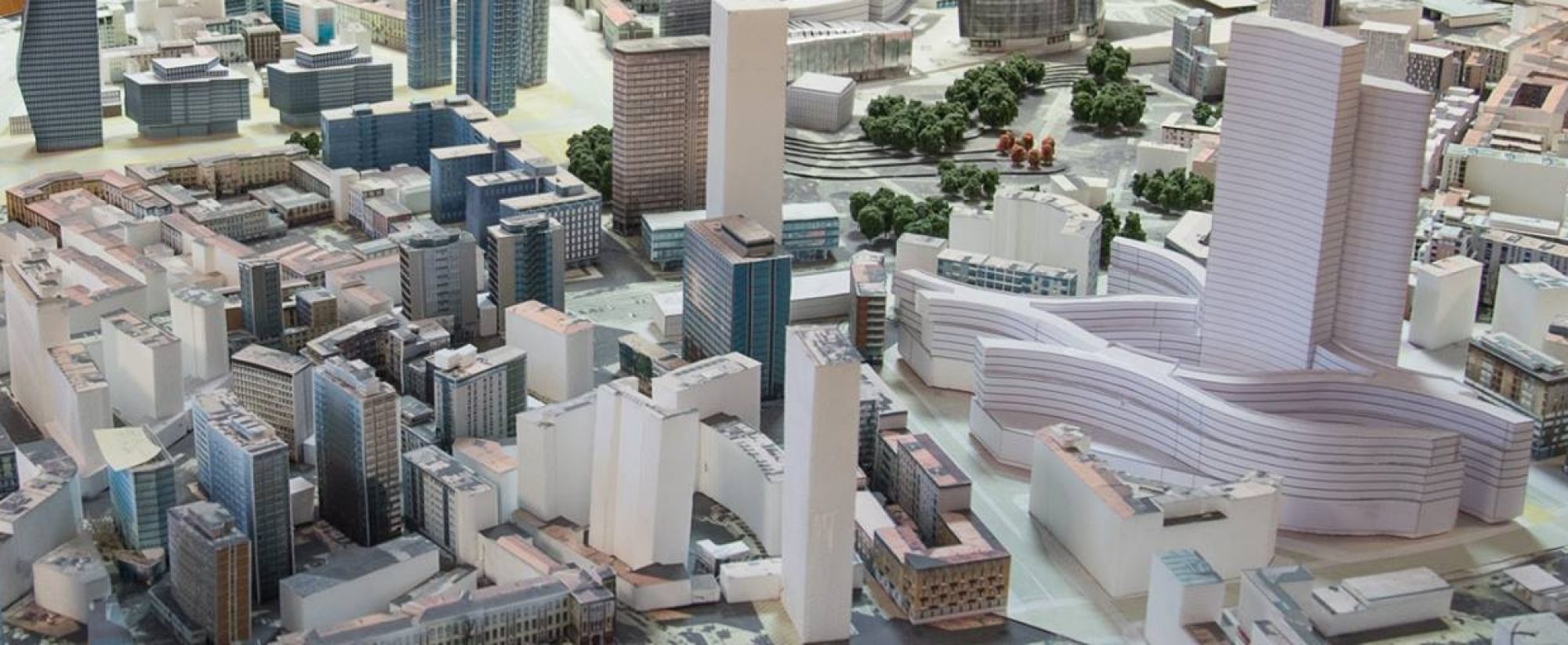Current status \ completed (2007 – 2010)
Funding programme \ POLIMI – DAStU
Project budget \ around €50.000
Keywords \ experiential simulation, environmental simulation
Project Overview
This is the first applied research developed by labsimurb. The main aim of the study is to anticipate the urban design outcomes and to support the evaluation process through different kinds of simulations, such as physical scale models, dynamic visual simulations, environmental simulations in order to verify the implications of the cumulative change of the Garibaldi Repubblica area of Milano, where large-scale projects have been promoted. This research, that started before the urban project construction, specifically concentrates on the morphological coherence of the proposed design with the existing built environment and in relation to the quality and livability of public spaces. Interpretative schemes are used to emphasize the component elements of the urban structure: the morphological patterns, the shape of the street network, the heights of buildings and silhouettes, the features of the urban fabrics, green connections, etc. The construction of an analytical and interpretative framework is combined with different visual simulations: tools and methods of two and three-dimensional high fidelity representation (experiential simulation) capable of showing the physical and environmental implications of the urban transformation. The aim is then to define a suitable reference scheme that highlights coherence and potential conflicts between design proposals and the urban environment.
Team, partners and stakeholders
Coordinator: Barbara E.A. Piga with Fausto Curti and Peter Bosselmann (UC Berkeley)
Team: Andrea Arcidiacono, Laura Cibien, Francesco Secchi, Valerio Signorelli with internship students.
The entire research was developed thanks to the collaboration of several internship students along the four year of the work. The Municipality of Milan provided all the bases for the bi and tri-dimensional reconstruction of the area and the urban design project.
Impact and Outcomes
The research demonstrates the usefulness of simulations for anticipating some experiential and environmental outcomes of design projects. It highlights how a neutral actor, such as a university institution, can support an informed decision-making and the process of negotiation by providing reliable evidence of some urban transformation impacts. The same approach can be fruitfully used from the very beginning of the design phase, i.e. from conception.
News, outputs and other materials
Playlist of dynamic simulations:
https://goo.gl/Jd2Dy1
Articles and conference papers on the research:
Piga, B. E. A. (2011). “The Urban Simulation and Projects Evaluation Laboratory at the Politecnico di Milano: an educational and research facility”. In Projecting Spaces: Conference on architectural visualisation (24-26 September 2009) (pagg. 114–119). Cottbus: Thelem Universit Ätsverlag.
Piga, B. E. A. (2011). “Simulazione e percezione degli ambienti urbani”. In Teorie e tecniche della rappresentazione contemporanea (1° ed., pagg. 183–194). Rimini: Maggioli.
Cibien, L., Secchi, F., & Piga, B. E. A. (2011). The «Tavolo Luminoso» How To Built A New Tool Suitable For Supporting Representation, Communication And Participation. In J. Breen & M. Stellingwerff (A c. Di), Envisioning Architecture: Proceeding of the 10th Conference of the European Architectural Envisioning Association (pagg. 253–258). Delft, 14 – 17 September 2011: Technische Universiteit Delft.
Barbara E. A. Piga, Eugenio Morello, & Valerio Signorelli. (2011). The experience of an academic simulation laboratory: The use of visual simulations for education and research. In Respecting Fragile Places: Proceedings of the 29th Conference on Education in Computer Aided Architectural Design in Europe (pagg. 734–741). Ljubljana: eCAADe and UNI Ljubljana.
Piga, B. E. A. (2010). La simulazione visiva per l’urbanistica. Il punto di vista percettivo nella comprensione delle trasformazioni urbane (PhD Thesis). Politecnico di Milano, Milan.
Piga, B. E. A. (2008). Attualità dei laboratori di simulazione urbana. La lezione dell’Environmental Simulation Laboratory di Berkeley a Times Square, New York. Territorio, (45), 63–68.
Andrea Arcidiacono, & Barbara E. A. Piga. (2008). Visual simulation and large projects evaluation. In Bridging the divide: celebrating the cities. Chicago.
Andrea Arcidiacono, & Barbara E. A. Territorio, (43), 40–52.

